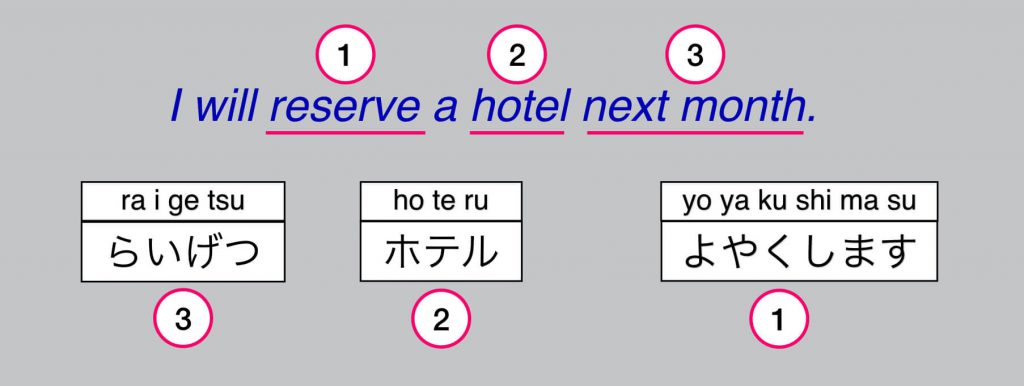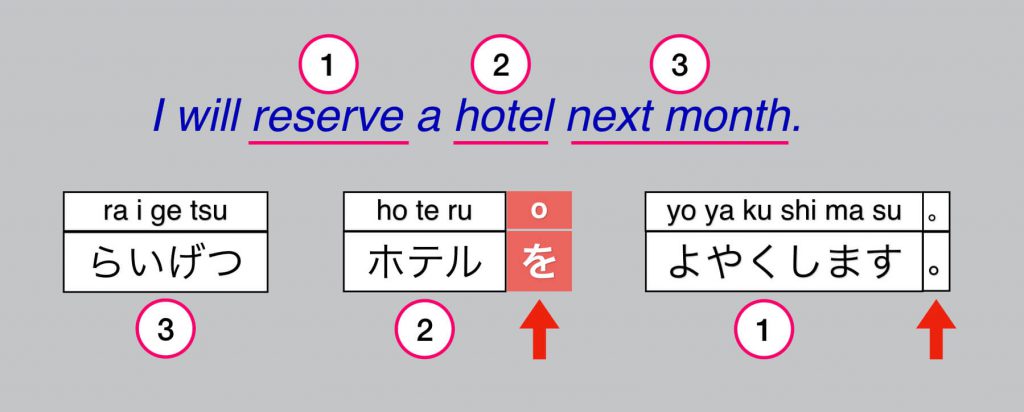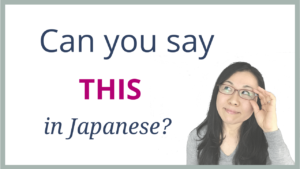In this article, I will explain how to translate English to Japanese. Translating English sentences into Japanese is not overwhelmingly challenging as long as you understand these TWO key points.
- Figure out how many units in the English sentence you need to convert into Japanese.
- Know what Particle you need to mark each unit.
Here I explain the process step by step. Ok, let’s begin!
Step 1: How Many Units in the Sentence?
Take a look at the English sentence below. Can you tell me how many units (words) in the sentence you need to convert into Japanese?
I will reserve a hotel next month.
Before you tell me the answer, keep these things in mind.
- In Japanese, the word I or my are often dropped. (No need to mention)
- There is no difference between singular and plural. (a hotel & 10 hotels are the same word in Japanese)
- Present tense and future tense look the same. (No need to mention will or is going to)
So, in the English sentence above, how many units do you need in Japanese? The answer? You need three. (1) reserve, (2) hotel, and (3) next month.

Step 2: Convert Each Word into Japanese
Let’s convert each unit into Japanese words.

Step 3: Place the Predicate (Verb) at the End
Now, let’s place them in the order. The fundamental rule is to place the verb (reserve) at the end of the sentence. That is the only location that you can never alter.
As long as you have put the verb at the end, the order of other units (words) does not matter. The order of #2 & #3 below can be switched. It is up to you.

Lastly, you need to mark each unit with the right particle. The verb at the end of the sentence never needs a particle. Also, there are some Time Expressions (phrases that indicate time) that do not take a particle such as “next month” below.
Don’t forget the period to end the sentence. A Japanese period is a tiny circle as you see here.

When Do I Not Need a Particle?
Time Expressions (Friday, March 5th, the Year 2018, 5:00 PM, Christmas, New Year’s Day, etc.) are usually marked by the Particle に NI in Japanese. We call the particle a Time Marker. But there are times that we don’t mark those time expressions with the Particle に NI. When do we use the Particle and when do we not?
The simplest way to figure that out is like this.
If you would add a preposition before the time expression in English, then add the Particle NI in Japanese.
For instance, let’s say you exercise every Friday. When you state the fact in English, would you add a preposition before the word “Friday”? The answer is YES, right?
I exercise ON Fridays.
Then, you need to mark the time expression Friday, which is きんようび kinyoobi in Japanese, with the Particle に NI.
わたしは まいしゅう きんようびに うんどうします。
Watashi WA maishuu kinyoobi NI undoo shimasu.
You can watch the lesson below to better understand how to translate English to Japanese. (9 min)
I hope this short lesson helped you better understand Japanese sentence structure. Happy learning! では、また?
